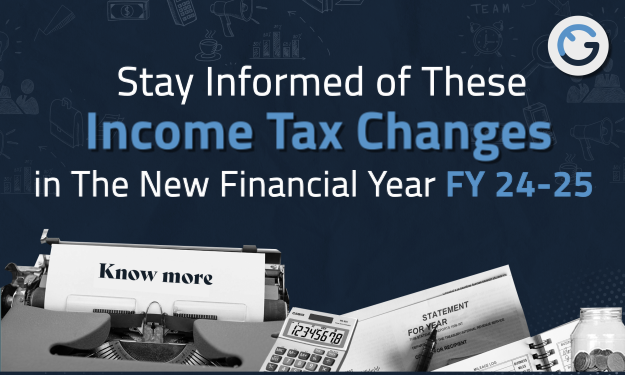As the new financial year begins, it’s essential for all individuals, professionals, and companies to stay updated on the recent income tax changes that could impact their financial planning and obligations. Whether you’re a salaried employee, a business owner, or a seasoned CFO, understanding these changes is crucial for effective tax management.
In this comprehensive guide, we’ll delve into the significant income tax alterations for FY 24-25, shedding light on their implications and benefits for taxpayers across the board.
Embracing the New Tax Regime Default Adoption
One of the most notable changes in the income tax landscape for FY 24-25 is the introduction of the new tax regime as the default choice for taxpayers. This regime offers lower tax rates but necessitates forgoing most exemptions and deductions.
While it simplifies tax calculations, taxpayers must carefully evaluate whether switching to the new regime aligns with their tax-saving objectives. It’s crucial to compare both regimes and determine which one optimally caters to your financial situation.
Understanding Streamlined Slabs And Expanded Basic Exemption Limit
The revised income tax slabs for FY 24-25 aim to provide relief to individual taxpayers, primarily through an expanded basic exemption limit. This expansion translates into reduced tax liabilities for many taxpayers.
Understanding these revised slabs and exemption limits empowers individuals and businesses to structure their incomes and investments efficiently, thereby minimizing tax burdens while ensuring compliance with regulatory norms.
Leveraging the Increased Tax Rebate Threshold
In FY 24-25, the increased tax rebate threshold offers additional relief to individual taxpayers, especially those with lower incomes. This enhancement allows eligible taxpayers to avail of higher rebates, effectively reducing their tax liabilities.
By capitalizing on this opportunity, taxpayers can maximize their tax savings and improve their overall financial well-being.
Maximizing Standard Deduction Extension
The extension of standard deduction provisions continues to benefit salaried individuals and businesses alike. For FY 24-25, taxpayers can enjoy a higher standard deduction, thereby reducing their taxable income.
Ensuring compliance with updated standard deduction rates and exploring other avenues for tax-efficient employee benefits can help individuals and companies optimize their tax planning strategies.
Embracing the Reduced Highest Surcharge Rate
The reduction in the highest surcharge rate for FY 24-25 is welcome news for taxpayers in higher income brackets. This reduction alleviates the tax burden on high-income individuals and businesses, allowing them to retain more of their earnings.
By strategically adjusting their income distribution and investment portfolios, taxpayers can mitigate the impact of surcharges and enhance their overall tax efficiency.
Conclusion
Staying informed about income tax changes is essential for all individuals, professionals, and companies navigating the complexities of the financial landscape. The income tax alterations for FY 24-25 offer several advantages, including streamlined tax regimes, increased exemption limits, and reduced surcharges.
By leveraging these changes effectively, taxpayers can optimize their tax planning strategies, minimize liabilities, and foster financial resilience. It’s crucial to consult with tax professionals and stay updated on regulatory developments to ensure compliance and make informed financial decisions.
With proactive tax management practices, individuals and businesses can navigate the evolving tax landscape with confidence and achieve their financial goals.

